
Here’s more evolution.

Another invention.

And a happy birthday goes out to Gail today. Hope you have a great day, Gail!
Here are more useful instructions.
As cavernas são formadas normalmente quando a água ácida das chuvas penetra no solo e entra em contato com as camadas de calcário, dissolvendo-as e formando buracos. De acordo com a espeleologia, ciência que estuda o assunto, a caverna pode ser considerada uma cavidade rochosa acessível aos animais e seres humanos, e ainda abrigar informações de pesquisa importantes sobre a história da geologia terrestre. Não somente no relevo, as cavernas podem se formar entre geleiras e recifes de corais. Saiba mais sobre as cavernas encontradas em diversos continentes:
Localizada na China, a caverna de 240 metros de comprimento é a mais procurada pelos turistas, há mais de 1.200 anos, que querem prestigiar as estalactites (formação de gelo vinda do teto) e as estalagmites (formação de calcário que sai do chão). Na verdade elas não são coloridas. Trata-se de uma mistura de luzes colocadas para chamar à atenção de quem a visita.
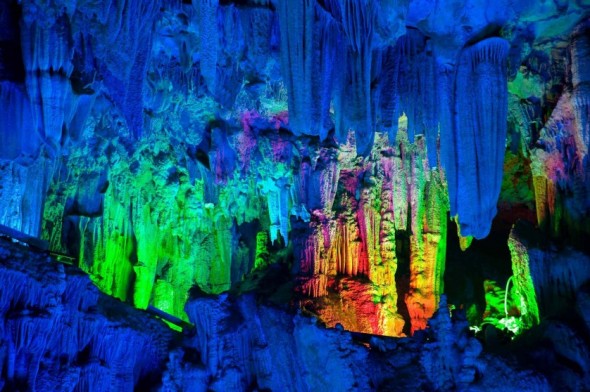
Foto: gltos
Esta caverna de gelo fica próxima ao vulcão Mutnovsky, na Rússia. Ela foi formada pela abertura que libera calor e gases vindos do vulcão mais conhecidos como fumarolas vulcânicas.
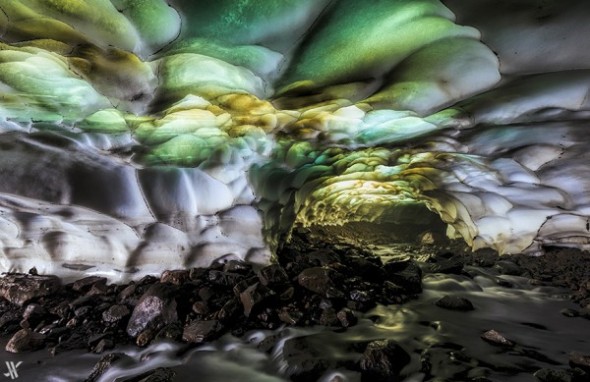
Foto: xflo
A caverna Son Doong, encontrada no Vietnã, é conhecida atualmente como a maior caverna. Ela está cheia de inúmeras maravilhas, incluindo, formações geológicas, cascatas e até animais. Possui cerca de 140 metros de altura em algumas partes e 4,5 quilômetros de extensão. O fim da caverna ainda não foi encontrado.
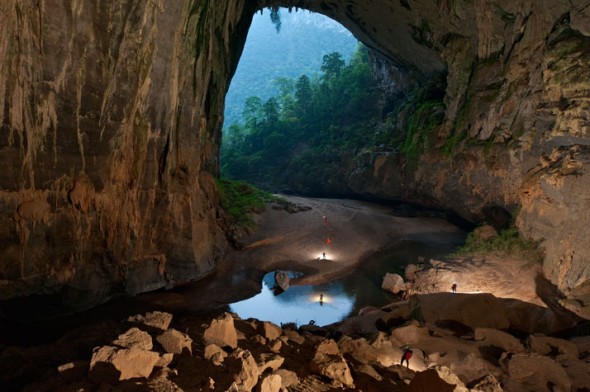
Foto: ngm
Está localizada na maior geleira da Europa e é considerada perigosa, visto que as geleiras tem se quebrado e se alterado constantemente.
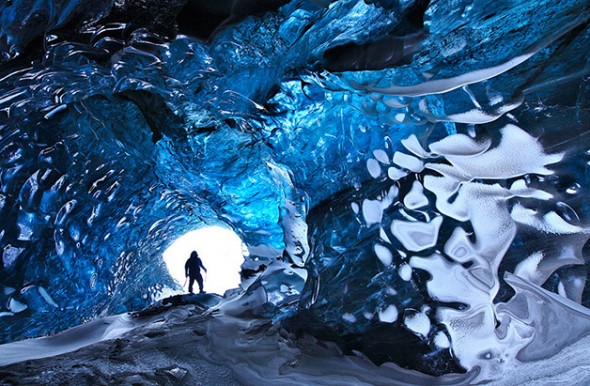
Foto: banffcentre
Para chegar nesta caverna em Algarve, região sul de Portugal, o acesso é feito somente pelo mar.
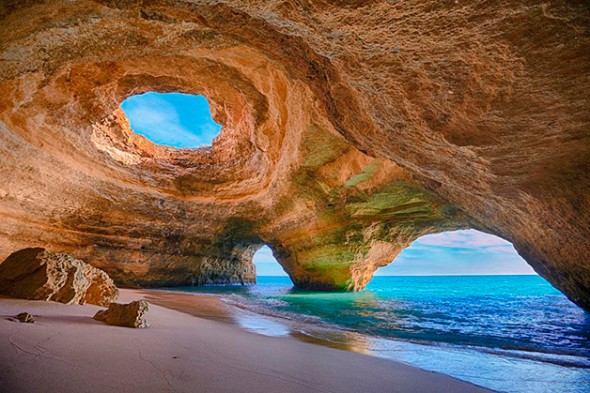
Foto: plus.google
As cavernas de Naica estão localizadas no centro de uma mina, a qual pertence a uma indústria extrusora de minério no sul do estado de Chihuahua, no norte do México. Conhecida como caverna de cristal, devido às estagmites e estalactites, encontra-se fechada para visitação devido a profundidade e às altas temperaturas.
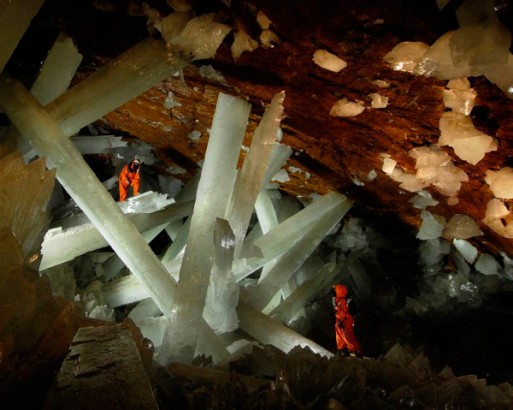
Foto: tourismontheedge
A caverna se encontra no Vale de Mendenhall, cerca de 12 quilômetros de Juneau, sudoeste do estado do Alasca, e tem aproximadamente 20 quilômetros de extensão. Foi formada devido ao derretimento parcial de gelo.
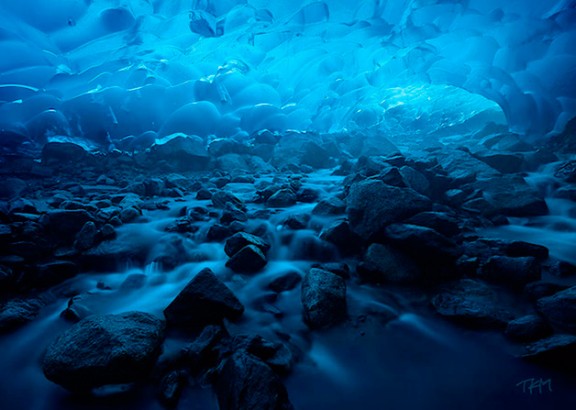
Foto: tkmphoto
A caverna encontra-se na cidade de Waitomo, ao norte da Nova Zelândia. Na região existe um grupo de cavernas, chamadas de Glowworm Caves. Esse local ficou conhecido por conta da grande população de Arachnocampa luminosa – uma espécie de mosca cuja as larvas se abrigam no teto das cavernas e soltam um fio de seda que possui bioluminescência, capacidade de produzir luz. A região possui cavernas com mais de 250 metros de extensão.
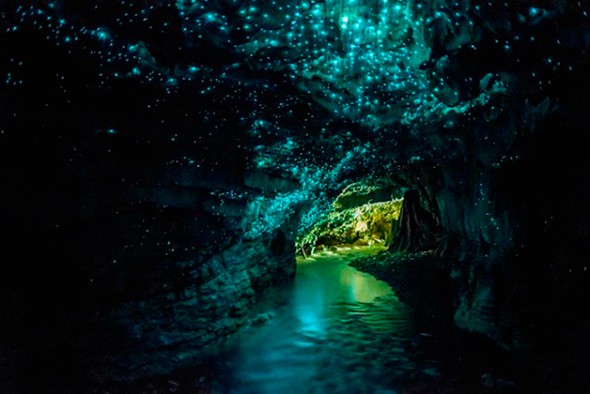
Foto: psu.edu
A caverna de Mármore foi esculpida ao longo de milhões de anos devido à erosão provocada pela água e recebe esse nome devido à sua cor, uma mistura de azul claro, branco e rosado que lembra os tons da rocha usada na construção civil.
A Caverna de Mármore está localizada ao sul da Patagônia chilena, no Lago Carrera. O lago é considerado o segundo maior da América do Sul. Parte do lago fica Argentina e outra parte no Chile. Já em território argentino, recebe o nome de Lago Buenos Aires.
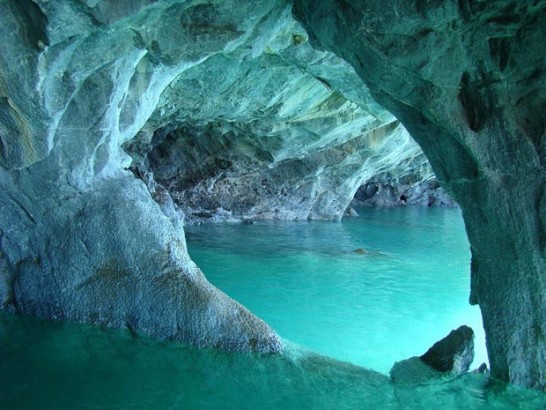
Foto: g1
As Cavernas Batu já foram o ponto de encontro dos povos indígenas Temuan e foi usada por colonos chineses e ingleses. Antigamente, os excrementos de morcego da caverna eram extraídos para serem usados na produção agrícola, porém, atualmente, o lugar está cheio de estátuas gigantescas e pode ser um ponto turístico para visitantes.
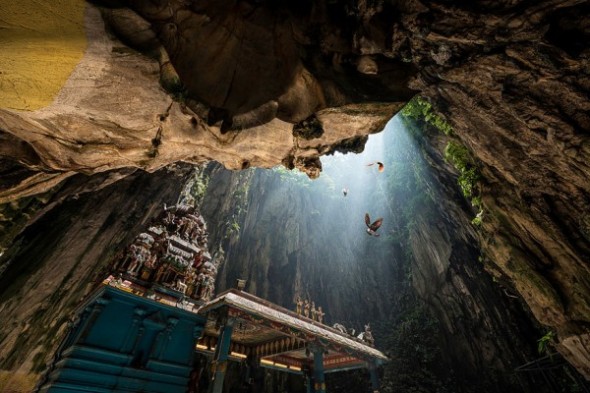
Foto: Danny Xeero
O post Veja fotos das 10 cavernas mais incríveis ao redor do mundo apareceu primeiro em Pensamento Verde.
“On a good day in the field, a birder might see a flock of birds,” writes photographer Réka Zsimon of this photo of great egrets in the tidal area of the Danube in Hungary. The image received an honorable mention in the Nature category of the 2013 National Geographic Photo Contest.
This photo was submitted to the 2013 National Geographic Photo Contest.
Download wallpapers »
See all 2013 contest entries »

O autor desta galeria é Gabriel Ivan, de 24 anos, estudante de Artes Visuais e fotógrafo freelancer. Ele esteve três vezes nas aldeias do sul do Amazonas desde o início do conflito do final do ano, em Humaitá, envolvendo os indígenas tenharim, para cobertura do Mídia Ninja.
Num breve relato ao portal Amazônia Real, Gabriel Ivan disse que o acesso às aldeias das etnias pirahã, jiahui e tenharim foi tranquilo em meio a militarização existente na área pelas forças da Polícia Federal, Força Nacional de Segurança e Exército devido ao conflito. Acompanhado do repórter Cley Medeiros, o fotógrafo disse que foi bem recebido pelos indígenas.
Gabriel Ivan disse que a impressão que teve ao chegar nas aldeias foi o medo dos indígenas em relação a um novo ataque de não índios. Gabriel disse que encontrou os índios numa situação que classificou de “um descaso” por parte dos governos em não compensar os índios pelos danos causados pela construção da rodovia Transamazônica, que cortou a reserva Tenharim-Marmelos nos anos 70.
Galeria – Gabriel Ivan
"I cannot describe the eerie feeling I had when I walked in on this scene," writes Julie Fletcher of this photo, which received an honorable mention in the Places category of the 2013 National Geographic Photo Contest.
"I followed a massive storm front for several hundred kilometers hoping to capture something special, but this blew my mind. The surreal milky green water is a natural phenomenon caused by electromagnetic activity from the lightning hitting the water's surface. There was no rain where I was and not much wind either, but in the distance the sky was charged and angry, subjecting its wrath [to] the graveyard of dead trees in this normally very dry lakebed. I was able to capture a series of unique images, this being one of the best."
This photo was submitted to the 2013 National Geographic Photo Contest.
Download wallpapers »
See all 2013 contest entries »


Foto: lamedicinaestetica
Se existe um fruto que pode ser considerado representativo do Brasil é o guaraná. Embora seja encontrado também na Venezuela, foi na Amazônia brasileira que ele se proliferou a ponto de transformar-se em uma referência cultural.
Descoberto pelos europeus já no século 17, o guaraná apresenta-se em cachos e chama a atenção por sua cor avermelhada. As qualidades terapêuticas do fruto começaram a ser observadas desde a chegada dos primeiros exploradores, que já notavam que a frutinha vermelha aumentava a energia e ainda ajudava a combater câimbras e febres.
Atualmente a ciência sabe que o guaraná tem em sua composição de em média 3% de cafeína, o dobro da encontrada no café, por exemplo. Daí viria os seus efeitos energéticos e revigorantes. Mas eles não são os únicos, já que o guaraná também oferece ação tônica cardiovascular, tem efeito diurético e ajuda no alívio de cólicas e enxaquecas.
A fruta caiu no gosto de brasileiros e estrangeiros e hoje é transformada em xarope, pó, além de estar presente em outras composições, principalmente na indústria de alimentos e bebidas. Também há cosméticos e alguns medicamentos que se utilizam dos princípios ativos da fruta.
Apesar da origem amazônica, atualmente a maior produtora de guaraná no Brasil é a cidade de Taperoá, na Bahia. Em território amazônico, o destaque produtivo fica com a cidade de Maués, no estado do Amazonas. Nesta área também encontram-se tribos indígenas que, desde tempos imemoriais, consideram o fruto sagrado a ponto de afirmarem serem filhos do guaraná.
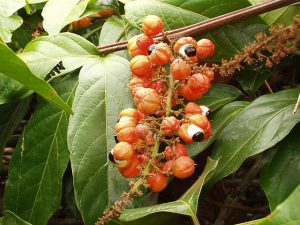
Foto: brunoroots
Esta atribuição de poderes mágicos ao fruto e o fato de ser tratado como uma verdadeira divindade pelos moradores mais antigos da Amazônia demonstram a sua importância na região, que vai além do sabor ou de qualquer efeito terapêutico cientificamente comprovado. Provavelmente essa relação tão respeitosa com o guaraná de alguma forma tenha levado a fruta a tornar-se parte da identidade brasileira mesmo para quem vive em grandes cidades, bem longe da floresta – e até para quem nunca esteve diante de um cacho de guaranás em seu vermelho vivo.
O post Guaraná da Amazônia: saiba mais sobre este fruto brasileiro apareceu primeiro em Pensamento Verde.
 Proposta ainda precisa ser aprovada pela CCJ e pelo Senado antes de virar lei
Proposta ainda precisa ser aprovada pela CCJ e pelo Senado antes de virar lei
A Comissão de Constituição e Justiça e de Cidadania da Câmara dos Deputados está analisando o Projeto de Lei 5855/13, do Senado, que assegura o registro público de nomes tradicionais indígenas.
A proposta, já aprovada pela Comissão de Direitos Humanos e Minorias, altera a Lei 6.015/13, que proíbe o registro de crianças com nomes que as exponha ao ridículo.
“Nós passamos esses anos todo sem dar a devida atenção a esse pequeno nó, mas que é muito importante para os povos indígenas”, afirma o relator na Comissão de Direitos Humanos, deputado Roberto de Lucena (PV-SP).
“Não faz sentido nenhum que nós, no cartório, impeçamos o pai e a mãe de colocar no filho o nome que gostaria”, acrescenta o parlamentar ressaltando que o projeto não abre brechas para que pais e mães inventem nomes nos cartórios.
O secretário-executivo do Conselho Indigenista Missionário (Cimi), Cleber Buzatto, apoia a iniciativa. “Cada povo tem uma língua, tem uma forma de nomear suas descendências. E o reconhecimento pelo Estado brasileiro desse direito dos povos de terem os seus próprios nomes registrados é importante.”
Segundos dados do Instituto Brasileiro de Geografia e Estatística (IBGE), o Censo de 2010 registrou cerca de 305 povos indígenas espalhados em todo o território brasileiro.
Tramitação
Como o projeto tramita em caráter conclusivo, se for aprovado pela CCJ seguirá direto para análise do Senado. A proposta só será analisada pelo Plenário da Câmara se houver requerimento aprovado neste sentido.
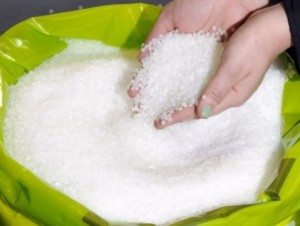
Foto: ecocidades
A junção de inovação e tecnologia pode ser de grande importância na criação de materiais mais sustentáveis. E o polietileno verde é um dos grandes exemplos de como esta combinação pode dar certo. Resultado do investimento de uma indústria de plásticos, o material é derivado da cana de açúcar, uma fonte renovável e farta no Brasil.
Utilizado para fazer revestimentos de fios e cabos, brinquedos, garrafas e outros objetos de plástico, o polietileno tradicional é um polímero de adição e sua principal fonte é o petróleo – portanto, uma fonte não renovável. Outro ponto que merece ser ressaltado é que produção do polietileno em formato tradicional emite uma quantidade muito maior de gases do efeito estufa do que o processo utilizado por sua versão verde.
Por sua vez, mesmo sendo produzido a partir do etanol de cana de açúcar, o polietileno verde conta com toda as características da versão tradicional no que se refere à versatilidade e resistência. A novidade já vem sendo utilizada por dezenas de indústrias no Brasil e em outros países. Apesar de contar com preço um pouco mais elevado que o tradicional, o polietileno verde oferece um valor simbólico aos consumidores conscientes e preocupados com o meio ambiente. Vale lembrar que as embalagens produzidas a partir de polietileno verde também podem passar por processos de reciclagem.
Para a economia brasileira, além de uma inovação em sustentabilidade capaz de garantir e prover diferentes indústrias, a criação do polietileno verde pode alavancar o uso do etanol de cana de açúcar, incentivando a pesquisa e as novas tecnologias que visem o seu desenvolvimento. É importante não esquecer, porém, que mesmo vindo de uma fonte natural, o plástico causa sérios impactos na natureza. E, já que foram criadas fontes renováveis que garantem a sua fabricação, é importante termos consciência para utilizá-lo e recicla-lo da melhor forma.
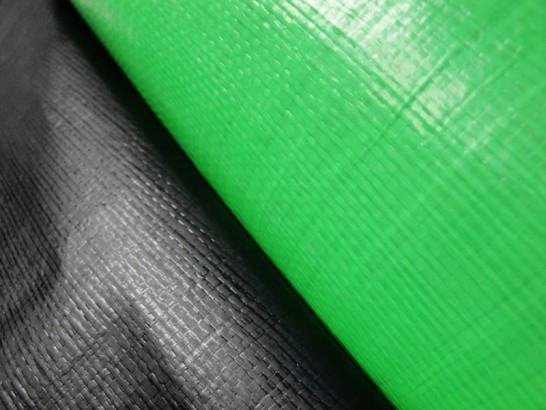
Foto: lojadaslonas
O post O polietileno verde e sua importância para a sustentabilidade no Brasil apareceu primeiro em Pensamento Verde.
Close-up of a sea star at Pomene Estuary, Mozambique
Looking at this underwater gem, I feel as if I could as easily be looking at the surface of a volcanic landscape. The texture and color are amazing. —Alexa Keefe, Photo of the Day editor
This photo and caption were submitted to Your Shot. Check out the new and improved website, where you can share photos, take part in assignments, lend your voice to stories, and connect with fellow photographers from around the globe.
See pictures of patterned sea creatures »
See pictures of our world in shades of orange »

People who had caffeine after looking at images apparently better at distinguishing them from similar ones the next day
A cup or two of coffee could boost the brain's ability to store long-term memories, researchers in the US claim. People who had a shot of caffeine after looking at a series of pictures were better at distinguishing them from similar images in tests the next day, the scientists found.
The task gives a measure of how precisely information is stored in the brain, which helps with a process called pattern separation which can be crucial in everyday situations.
If the effect is real, and some scientists are doubtful, then it would add memory enhancement to the growing list of benefits that moderate caffeine consumption seems to provide.
Michael Yassa, a neuroscientist who led the study at Johns Hopkins University in Baltimore, said the ability to separate patterns was vital for discriminating between similar scenarios and experiences in life.
"If you park in the same parking lot every day, the spot you choose can look the same as many others. But when you go and look for your car, you need to look for where you parked it today, not where you parked it yesterday," he said.
Writing in the journal Nature Neuroscience, Yassa described how 44 volunteers who were not heavy caffeine consumers and had abstained for at least a day were shown a rapid sequence of pictures on a computer screen. The pictures included a huge range of items, such as a hammer, a chair, an apple, a seahorse, a rubber duck and a car.
When each image flashed up on the screen, the person watching had to say whether the object was normally found indoors or outside, but they were not asked to memorise the pictures. At the end of the task, each volunteer was randomly assigned either a 200mg caffeine pill or a placebo. A typical cup of coffee contains around 150mg of caffeine.
The next day, the scientists brought the volunteers back and sat them down at the computer again. This time, the sequence of images included many they had seen the day before, but some were new and others were similar. The similar images varied in how close to the originals they were. Some showed the same object from a different angle, while others were a similar type of object, such as a different design of hammer from the one they had seen before.
For this part of the study, the volunteers had to say whether each image was either new, old or similar to one they had seen the day before. According to Yassa, the caffeine and placebo groups scored the same except when it came to spotting the similar images. In this task, the caffeine group scored around 10% higher, he said.
"What I've taken from this is that I should keep drinking my coffee," Yassa told the Guardian. "Our study suggests there's a real learning and memory benefit, but other studies suggest caffeine is associated with increased longevity, and a resistance to Alzheimer's disease. In moderate amounts, it could have beneficial effects for health."
Yassa said it was unclear how caffeine might help the storage of memories, but one theory is that it leads to higher levels of a stress hormone called norepinephrine in the brain, which helps memories to be laid down.
Some scientists, however, say they need more evidence to believe the effect. George Kemenes, a neuroscientist who studies memory at Sussex University, said the statistical techniques used in the paper were not good enough to prove the effect was real. "I have reservations. If the statistics aren't right the whole story, beautiful as it is, unravels," he said.
"Even if this was solidly true, which in my view it isn't, it wouldn't prove that caffeine has a memory-enhancing property. It wouldn't call this an improvement in long-term memory."
Jon Simons, who works on memory at Cambridge University, said the study was interesting and carefully designed, but the effect needed to be shown in a larger number of people. "The claim that caffeine affects the consolidation of memories is based on quite a small effect that would really benefit from replication in a larger sample to be convincing," he said.

Foto: metalgrafica
O reaproveitamento de materiais é um dos grandes pilares para uma economia sustentável. Grandes operações de reciclagem do lixo urbano feitas pelas prefeituras são importantes, mas nós também podemos utilizar do mesmo princípio dentro de casa. Vai aí uma bela forma de reaproveitarmos aquelas embalagens cilíndricas de papelão e lata, normalmente usadas para batatinhas fritas. Elas podem ser transformadas em caixas de som para seu celular.
Este tipo de reciclagem é simples, barata e gera uma amplificação do som de boa qualidade. Se compararmos com o valor normal de uma caixa de som, que custa em média R$ 90,00, as vantagens só aumentam.
Os materiais necessários para a confecção da caixinha de som são: estilete; canetão; dois prendedores de papel; papel higiênico; spray de tinta; fita crepe; e a própria embalagem cilíndrica. Veja abaixo o passo a passo de como fazer uma caixa de som para celular.
Passo 1: Marque com o canetão o local onde o celular será encaixado. Meça as dimensões do aparelho para que o buraco seja bem justo. A saída de som precisa ficar dentro da latinha. Fixe um dos prendedores de papel de cada lado da embalagem com fita crepe, para que eles sirvam de apoio.

Foto: construir.arq
Passo 2: Pinte a latinha com o spray de tinta e deixe-a secar.

Foto: construir.arq
Passo 3: Preencha a latinha com pelo menos 14 cm de papel higiênico para ajudar na acústica do equipamento.
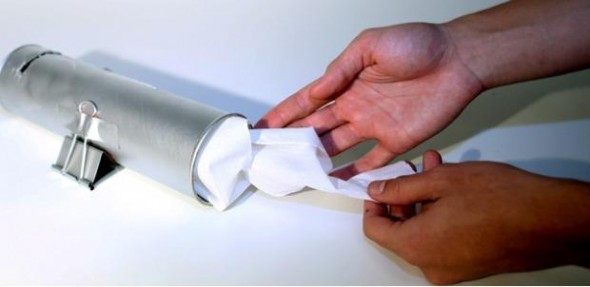
Foto: construir.arq
Passo 4: Encaixe seu celular no local indicado anteriormente e aproveite sua música.
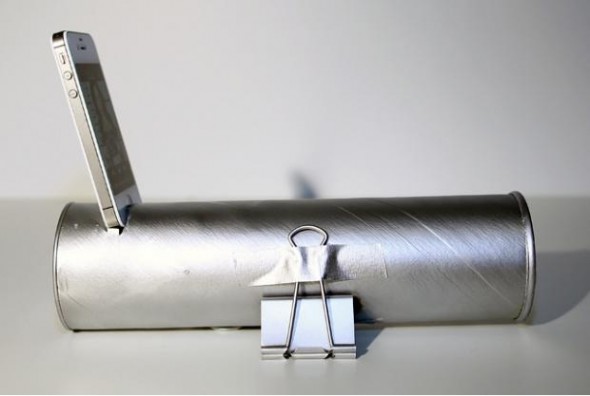
Foto: construir.arq
O post Passo a passo: Aprenda como fazer uma caixa de som para celular apareceu primeiro em Pensamento Verde.
Se você ainda não sabe o que fazer com as garrafas de vidro que consumiu, pode se basear na ideia desses tailandeses e realizar projetos sustentáveis. Durante 30 anos, monges arrecadaram cerca de 1,5 milhões desse material reciclado e os usaram para levantar um templo budista em Sisaket, província situada a 400 Km de Bangkok, capital da Tailândia.
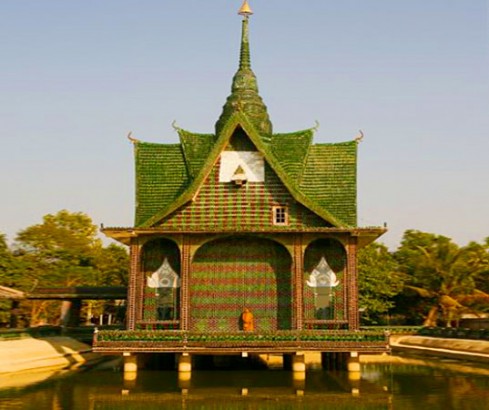
Foto: inhabitat
O Wat Pa Maha Chedi Kaew, conhecido como “O Templo das Milhões de Garrafas”, começou a ser construído em 1984, ano em que os monges, com o auxílio das autoridades locais, coletaram o material reciclável. Com essas garrafas, os budistas conseguiram projetar um complexo de 20 edifícios com banheiros, espaços para meditação e descanso, salas de oração e crematório.
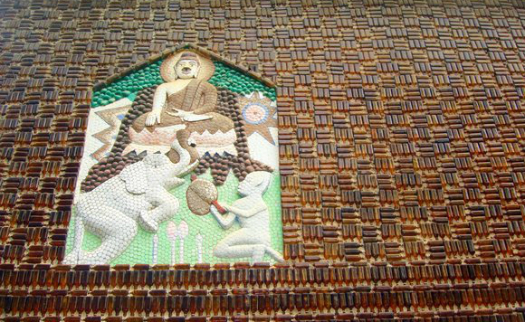
Foto: greensavers
Além dos vasilhames, a estrutura do templo possui bases de concreto, principal elemento para dar sustentação. Os detalhes do prédio ficam por conta das tampinhas das garrafas, que são usadas para decorar as paredes e produzir os mosaicos com a imagem do Buda. A construção sustentável também recebeu destaque e foi inserida na lista de passeios ecológicos da região sudeste da Ásia.

Foto: telegraph
O post Monges na Tailândia constroem templo com 1,5 milhões de garrafas recicladas apareceu primeiro em Pensamento Verde.